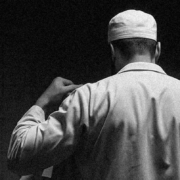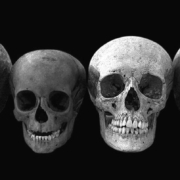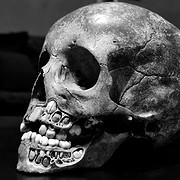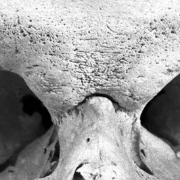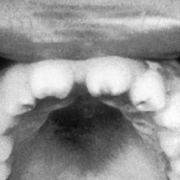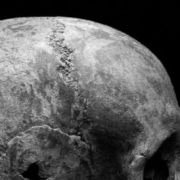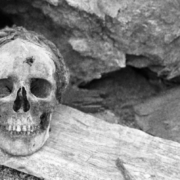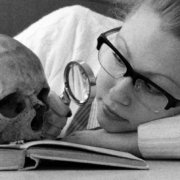For over 25 years I have walked through morgues, stood in courtrooms, stared at skulls, and listened to silence that told darker stories than words ever could. I have seen cruelty that left marks you cannot see on skin. I have learned what people are capable of when no one is watching. Likewise, I have learned that justice is not always just. In the end, I was never part of the system. I was only fuel to keep its machinery running.
Read more
Posts
Introduction: The Challenge of Stature Estimation in Forensic Contexts – Forensic anthropologists, archaeologists, criminalists, pathologists, and forensic medical examiners frequently encounter the critical need to estimate stature from skeletal remains across a diverse range of challenging environments. Whether carefully excavating ancient burial sites in remote field locations under harsh weather conditions, analyzing skeletal evidence within the controlled setting of a laboratory, or conducting assessments on the move during travel to crime scenes or archaeological digs, the ability to determine stature swiftly and accurately remains a cornerstone of forensic and anthropological investigation. Stature estimation serves as a vital tool in the identification of unknown individuals, providing key biometric data that can be cross-referenced with missing persons records to aid in criminal investigations or disaster victim identification. In archaeological contexts, it offers profound insights into the biological and demographic profiles of past populations, illuminating aspects such as health status, nutritional adequacy, and socio-economic conditions that shaped their lives.
Although it remains a fascinating and sometimes macabre question whether one is allowed to possess a human skull, behind it unfolds a dense and intricate forest of ethical, legal, and cultural considerations. Law enforcement agencies, lawyers, and even private collectors sometimes find themselves confronted with human remains, whether in the course of professional forensic investigations, academic research, or simply out of a passion for collecting. Drawing on my extensive experience and profound knowledge of this subject, I aim to illuminate the legal, ethical, and cultural-historical foundations that must be considered in this context in a comprehensive and neutral guide for those who wish to explore the phenomenon of the death cult more closely.
In humility I am always awed by the limitless ingenuity of Mother Nature, whose intricate design is exemplified by the countless functions of the human body. From the moment of birth, through the many phases of growth, maturation and eventual senescence, Homo sapiens stands as a testament to biological evolution, an awe-inspiring masterpiece that challenges our understanding of nature. One is compelled to wonder about the force behind this creation and the intelligence responsible for orchestrating such a marvel.
Good afternoon, everyone. Today, I invite you to explore the fascinating realm of sex estimation from human skeletal remains, a discipline that bridges the scientific domains of forensic and archaeological anthropology. This skill is a cornerstone for reconstructing not only the lives of individuals but also the intricate social fabrics of their communities. Whether we are delving into ancient civilizations or working on modern forensic cases, sex estimation provides crucial insights.
Read more
Hutchinson’s Teeth, named after the British physician Sir Jonathan Hutchinson (July 23, 1828 – June 23, 1913), are a diagnostic feature that appears in children with congenital syphilis. This characteristic dental deformity represents a valuable source of information for forensic anthropologists like myself, especially when investigating historical skulls. Their unique shape, marked by a notch in the central incisors of the upper jaw, provides a clear indication of an individual’s medical history and can contribute to identifying disease patterns in past societies.
Reading Death in the Bones: How Cranial Sutures Reveal Age at Death – Imagine you’re holding a skull in your hands. There’s no hint of the life this person once led, no skin, no muscles, no eyes to tell tales. But the bones themselves, the lines that connect them, speak their own language. In forensic anthropology and archaeology, there is a method that seems like an art but is firmly rooted in science: determining the age at death by examining the cranial sutures, or sutures. These finely ossified connections that stretch across the skull give us crucial clues about how old a person was when they died.
It was one of those warm summer afternoons when the air was heavy and the heat oppressive. In the idyllic suburb at the edge of town, where most gardens were blooming oases of tranquility, the new homeowner had big plans. The old garden, which until then had been little more than a collection of wild bushes and patches of grass, was to give way to a chic pool. A dream project meant to give the property the final polish. But the dream quickly turned into a nightmare when the excavator’s bucket suddenly hit something hard – a human skull.
Prof. Dr. med. Dr. rer. nat. Friedrich Schwarzfischer (1921 to 2004) was a key figure in modern forensic anthropology and human genetics in Germany. His work revolutionized the scientific practice of identity determination and attracted international recognition. In particular, his 1992 classifications concerning the probability of identity have become a standard reference in forensic science. This report highlights the importance of his predicate classes and provides an extensive overview of his life and scientific achievements.
The term “human race” has polarized both the scientific community and society at large for centuries. Anthropologists, biologists, and a broad segment of the public have debated its meaning and application. While the English and French languages use “race” to refer to a group of people or humanity as a whole (“human race”) without any intention of classification, in German, “Rasse” is often used for the genetic and phenotypic differentiation of human groups. In this text, the described cranial features are not only the result of historical documentation but also based on my own experiential knowledge gathered over the years.
